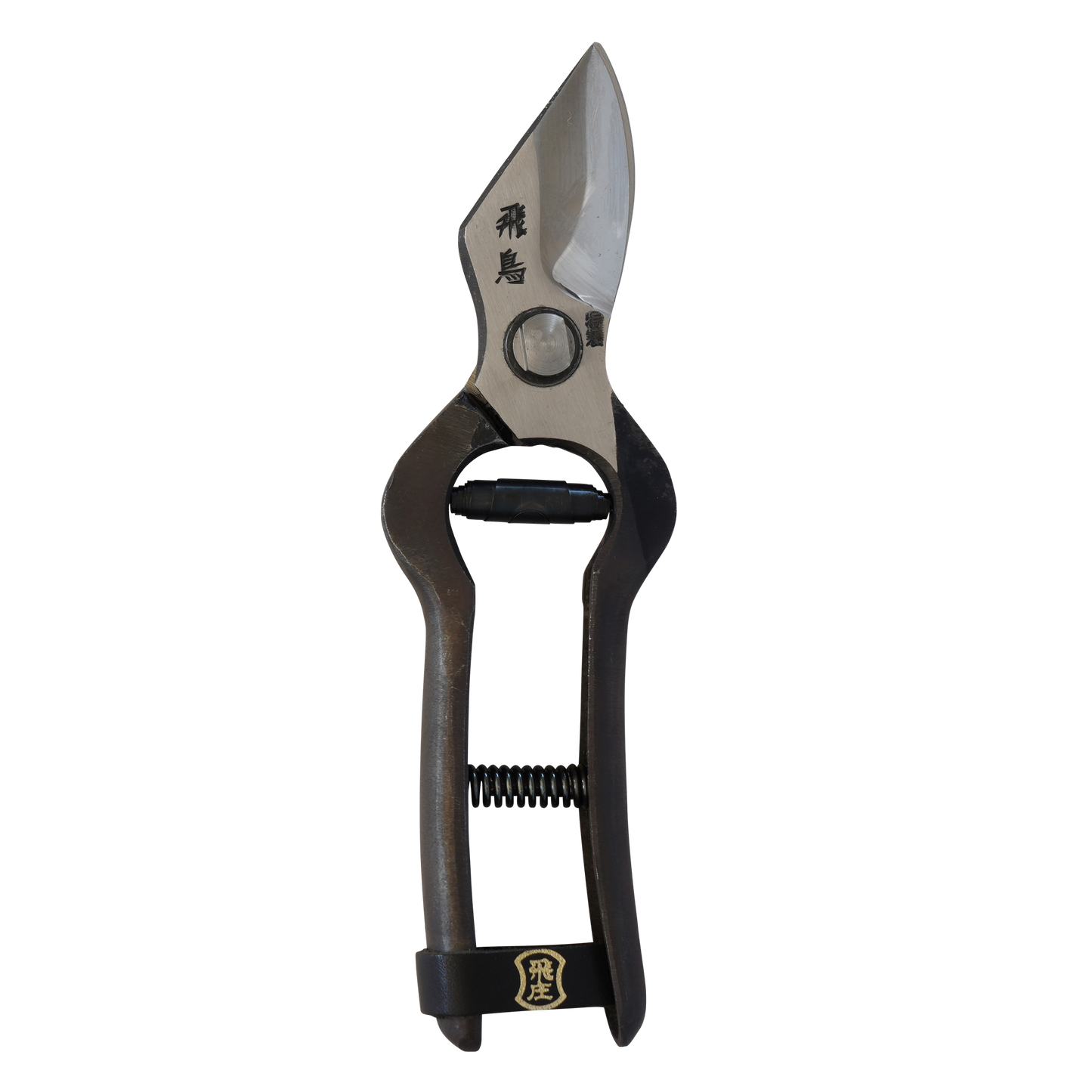Hiryu 190mm Professional Pruning Secateurs
Hiryu 190mm Professional Pruning Secateurs
Secateurs are used to prune the thinner branches and dead wood of trees and shrubs. Use a lopper or pruning saw for pruning thicker branches and dead wood.
Hiryu secateurs are made for professional gardeners. The Hiryu is a ‘flying dragon’ type of secateur. This means the blades do not touch. That is, there is a gap between the cutting blade and holding anvil. The Hiryu has additional sharpness and no friction when compared to the SR-1 secateurs. The Hiryu is also sharper than the Asuka, as the Hiryu cutting blade is thinner and honed sharper.
The Hiryu also has four reservoirs around the screw. The reservoirs can be filled with a lubricant for a smoother action.
The Hiryu has a different spring system compared to the SR-1. The coiled spring reduces shock to the hand, making them ideal for long hours of work involving a large amount of pruning.
Note: the Hiryu does not have a nut on the centre bolt – this is intentional. The nut is not required as the centre bolt is tightened by screwing it to the left.
Couldn't load pickup availability
Share
{Maker/Brand}Maker
Tobisho
{Maker/Brand}Origin
Yamagata Prefecture, Japan
{Maker/Brand}Stock Keeping Unit
PS-9
{Specifications}Material(s)
YCS-3 (Carbon steel)
{Information}Care Instructions
The blades are made of high carbon steel. High carbon steel blades must be treated to avoid rusting. Japanese traditionally use Camellia (Tsubaki) Oil to treat high carbon steel tools. Other suitable oils may also be used. Ensure the blade is clean and dry before applying Camellia Oil. Simply wipe the blade with a clean cloth impregnated with Camellia Oil. Re-apply after each use. Although the blades of Tobisho secatuers, shears, pruners and clippers are made of hardened steel, they're not impervious to misuse. Only use for the specified activity on this page. Do not cut wire, metal, stone, plastic or any other hard material. Even bamboo fibres and some very hard woods, especially knots and burrs, can damage hardened steel edges. Dropping the tool onto a hard surface may cause the blade to break. Do not twist or apply uneven pressure. Cutting should occur along the section of the edge(s) closest to the handle. Cutting at the point or tip runs the risk of snapping the blade.



